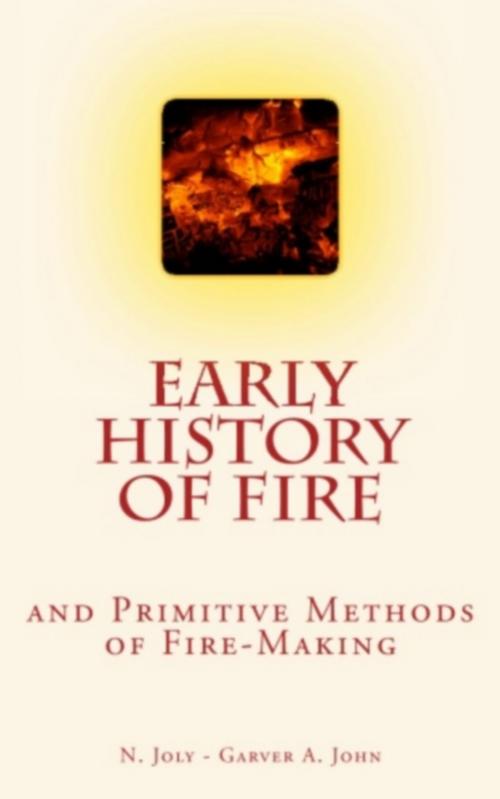| Author: | John A. Garver, N. Joly | ISBN: | 9782366594553 |
| Publisher: | Editions Le Mono | Publication: | June 23, 2017 |
| Imprint: | Editions Le Mono | Language: | English |
| Author: | John A. Garver, N. Joly |
| ISBN: | 9782366594553 |
| Publisher: | Editions Le Mono |
| Publication: | June 23, 2017 |
| Imprint: | Editions Le Mono |
| Language: | English |
The most important discovery ever made by man was the use of fire. It was, in fact, a giant stride on the road to civilization.
“Tylor E.B. gives interesting details about the discovery of fire, and the various modes of obtaining it in every age. The primitive method of all would seem, according to him, to have consisted in rubbing together two pieces of dry wood, but this process was perfected in the course of time. Thus, friction is produced by means of a stick which is made to slide rapidly to and fro upon a piece of dry, soft wood laid upon the ground (in Tahiti, the Sandwich Islands, New Zealand, Timor, etc.). This process Tylor denominates the stick-and-groove (Fig. 1), but the fire-drill (Figs. 2 and 4) is more generally used. In its simplest form, the fire-drill consists of a stick, one extremity of which is inserted in a hole bored in a piece of dry wood, while the stick itself is twirled between the hands and pressed downward.
The most important discovery ever made by man was the use of fire. It was, in fact, a giant stride on the road to civilization.
“Tylor E.B. gives interesting details about the discovery of fire, and the various modes of obtaining it in every age. The primitive method of all would seem, according to him, to have consisted in rubbing together two pieces of dry wood, but this process was perfected in the course of time. Thus, friction is produced by means of a stick which is made to slide rapidly to and fro upon a piece of dry, soft wood laid upon the ground (in Tahiti, the Sandwich Islands, New Zealand, Timor, etc.). This process Tylor denominates the stick-and-groove (Fig. 1), but the fire-drill (Figs. 2 and 4) is more generally used. In its simplest form, the fire-drill consists of a stick, one extremity of which is inserted in a hole bored in a piece of dry wood, while the stick itself is twirled between the hands and pressed downward.















